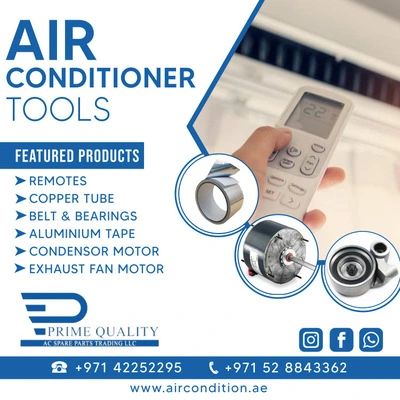The Ultimate Guide to Air Conditioner Testing Tools

Whether you are an expert in HVAC or just avid DIY fanatic, this book is invaluable resource for mastering the essentials of air-conditioning diagnostics, maintenance and optimization. This guide encompasses everything-from measurement of temperature changes and pressure of coolants up to leak finding in electric components and meeting standards of relevant industries. When armed with the facts and tools inside, you will be in good standing to address problems, enhance efficiency, extend the operational life of your air conditioner, and still have a pleasant atmosphere within the house.
Below is the ultimate guide to air conditioner testing tools:
Digital Thermometer: It requires a digital thermometer with a probe for measurements in the supply and return air temperature. It enables you tell if your AC is performing well.
Manifold Gauge Set: The pressure of refrigerant in the AC system can be measured using a manifold gauge set. They involve pressure gauge of high and low pressure and hose. The gauges are used to determine problems associated with the refrigerant and system operation.
Leak Detector: Leaks in refrigerants can cause low efficiency in your air conditioner, damaging the environment. The refrigerant leak detector indicates your AC system leaks.
Multimeter: Checking components such as capacitors, relays, and contactors would require a digital multimeter. The meter can be used to assess such quantities as voltage, current and resistance.
Clamp Meter: Electrical current can be measured using a clamp meter without disrupting the circuit. With the help of this meter, you can detect if there is an unusual peak in the AC unit’s current drawn.
Voltage Tester: This device checks if there is stable and safe power supply for a AC unit. Voltage is checked; its circuit is set grounded.
Airflow Meter or Anemometer: It is important to measure, whether or not the air flow from the air unit vent is uniformly distributed. To verify the condition of airflow, you can used airflow metar or anemometer.
Refrigerant Scale: The refrigerant scales are used for charging, checking and evacuating on the refrigeration system. It therefore means that you do not charge much above what the system deserves.
Hygrometer: Humidity is what the hygrometer measures in the atmosphere. Humidity Control for Your Home Environment.
Pipe Cutter and Flaring Tool: You will need a pipe cutter and flaring tool to cut or bend with any material used in the refrigerant system such as copper pipes that may require fixing, replacing.
Vacuum Pump: A refrigerant line is first evacuated of air and moisture by using a vacuum pump.
Pressure Testing Kit: You need to carry out a pressurize test on the system before any refrigerants get added to check for any leakages. You can perform it safely with a pressure testing kit
Fin Comb: Fins on AC condenser and evaporator coils may bend up with age thus reduced flow of air resulting into decreased efficiency. These fins are then straightened using a fin comb.
Safety Gear: Remember to wear PPE such as gloves, safety glasses and ear protection while dealing with AC systems.
To keep an ideal interior environment and enhance its cooling system, anybody who wishes to undertake maintenance must understand Air conditioner tools testing instruments well. This ultimate guide will help anyone – expert or novice HVAC technician, to diagnose properly, do regular upkeep and keep the air-conditioning system running smoothly in order to avoid costly malfunctions. Do remember to practice safety, follow industry standard protocols, make use of these tools, and thus, keep your Air Conditioner parts running smoothly, save energy, and improve the overall comfort.
- Art
- Causes
- Crafts
- Dance
- Drinks
- Film
- Fitness
- Food
- Games
- Gardening
- Health
- Home
- Literature
- Music
- Networking
- Other
- Party
- Religion
- Shopping
- Sports
- Theater
- Wellness
- IT, Cloud, Software and Technology


